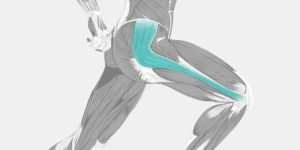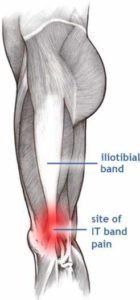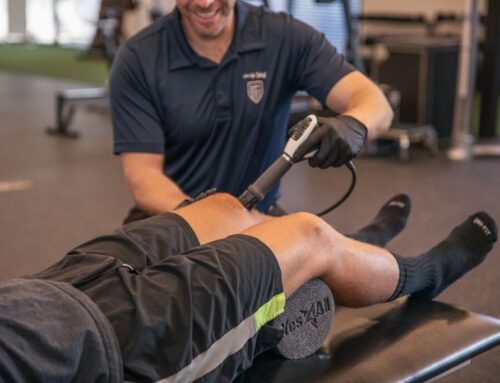Welcome to IT Band Pain: Myth v Reality!
Should I stretch my IT band? Why does it hurt so much to foam roll it? How do I get rid of the friction that’s causing my pain?
Read on to learn the 3 biggest myths surrounding your ITB pain!
What is the IT Band? How do I know if I have IT band pain?
The IT or iliotibial band is a long band of tissue that connects the hip to the knee. It’s made up of something called fascia, which helps stabilize the outside of the knee.
Pain is felt on the outside of the knee especially with descending stairs and running downhill. Runners will typically take time off and the pain will decrease or go away, but once they return to running the same pain comes right back.
What have you been doing for your ITB pain, and why isn’t it working? It could be because you’ve been inundated with the biggest myths about ITB issues. Check them out below!
Myth 1: ITB pain is caused by friction
Past studies have proposed that ITB pain is caused by the band rolling over the bone at its attachment near the knee, causing friction and inflammation. However, recent research challenges this and shows that the ITB is actually firmly attached to the bone and can’t slide back and forth over it. As a result, it’s not able to create friction. The classic pain on the outside of the knee is more likely due to fatty tissue getting compressed between the ITB and the leg bone.
Myth 2: The ITB can and should be stretched
Since the ITB is made up of fascia, which is different from a muscle, it’s nearly impossible to stretch it. It would take way more force than we’re capable of producing on our own, to actually induce a stretch. This is a good thing – since the roles of the ITB are to stabilize the side of the knee and provide energy storage and release during running, we don’t really want it to be stretchy anyway.
What about foam rolling? Though it’s often said that rolling out can break up adhesions or knots, it turns out that’s not the case. Sometimes foam rolling can relieve tension and pain in the short-term, but it may also further compress some already-irritated structures on the side of the knee. If you love foam rolling, check out how to foam roll for less irritation of ITB pain.
Myth 3: Hip weakness causes ITB pain
Though hip strengthening is an important part of ITB rehab programs, it’s not 100% clear that hip muscle weakness directly causes ITB pain. Studies of muscle weakness haven’t been able to show much of a difference in hip muscle strength between runners with and without ITB pain. It’s possible that relative weakness of hip muscles contributes, but doesn’t directly cause, ITB pain. Errors in training progressions, variations in running mechanics, and poor muscular control of the leg during running likely contribute more to the risk of ITB pain than hip muscle weakness.
So the answer to your ITB pain is not to stretch and roll it over and over to try to reduce friction – the answer is to increase the ability of your muscles to tolerate all the demands placed on them by daily activities. If you’ve been struggling with IT band pain for weeks or even months, give us a call or send us a message today to find out how we can help. For immediate changes in your discomfort, check out our tips for daily improvement in knee pain.
References
Chaudhry, H., Bukiet, B., Ji, Z., Stecco, A., & Findley, T. W. (2014). Deformations experienced in the human skin, adipose tissue, and fascia in osteopathic manipulative medicine. The Journal of the American Osteopathic Association, 114(10), 780-787.
Fairclough, J., Hayashi, K., Toumi, H., Lyons, K., Bydder, G., Phillips, N., … & Benjamin, M. (2007). Is iliotibial band syndrome really a friction syndrome?. Journal of Science and Medicine in Sport, 10(2), 74-76.
Grau, S., Krauss, I., Maiwald, C., Best, R., & Horstmann, T. (2008). Hip abductor weakness is not the cause for iliotibial band syndrome. International journal of sports medicine, 29(07), 579-583.
Blog image: https://www.vivehealth.com/blogs/resources/it-band-syndrome








